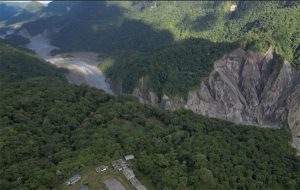
Mike Cohen and Paul Burkhardt | Bloomberg
CAPE TOWN
EnergiesNet.com 02 23 2023
Even for a nation hit by rolling blackouts since 2008, the more prolonged power outages that have dogged South Africa for months on end have been hard to endure. The problem: Eskom Holdings SOC Ltd., the debt-stricken state utility that supplies more than 90% of the nation’s electricity, can’t keep pace with demand from its old and poorly maintained plants. With the governing party in danger of losing its majority in 2024 elections, President Cyril Ramaphosa has declared a national “state of disaster,” allowing his administration to bypass bureaucratic hurdles so it can accelerate new energy projects. The government intends to give Eskom 254 billion rand ($13.9 billion) in debt relief to free up funds for repairs and improving the transmission and distribution system.
1. What’s gone wrong for Eskom?
A history of deep financial losses and poor planning, plus allegations of mismanagement and corruption, have plagued the utility. It ran into financial trouble in the early 1980s after committing to build plants that weren’t needed. Then, when White minority rule of South Africa ended in 1994, the company wasn’t prepared for the sharp increase in demand as previously neglected areas were connected to the grid. Over the following two decades, Eskom suffered from erratic government decision-making and political interference. A lack of generating capacity led to regular power supply disruptions. The company has had 14 leaders since 2007, much of that turnover coming during the nine-year tenure of South African President Jacob Zuma. A judicial commission found the upheaval at Eskom was an orchestrated attempt by Zuma’s allies to raid its coffers with his tacit consent. Zuma denies the charge. Eskom’s leaders have said the company hasn’t been permitted to charge adequate prices to meet its costs.
2. What’s been the fallout?
South Africa’s National Treasury predicted the economy would expand by just 0.9% in 2023, down from 2.5% in 2022, and expects power rationing to persist until at least the end of 2024. Intentional outages imposed by Eskom to reduce demand, often lasting many hours, have affected water services (since pumps can’t run without power), food safety (since refrigerators can’t stay cold) and the ability of hospitals to provide care. These blackouts — the result of a process known as loadshedding, which aims to prevent a total collapse of the grid — are sapping business confidence in a country whose biggest industries, such as mining, depend on reliable access to cheap electricity. The central bank estimated that the crisis was costing the economy as much as 899 million rand a day.
3. Is this just a problem for South Africa?
No. South Africa’s dependence on coal, the dirtiest fossil fuel, for four-fifths of its power has implications beyond its borders. When burned, coal emits almost twice as much carbon dioxide as natural gas. Getting countries to shift away from coal is part of the global effort to limit climate change. At the COP26 climate conference in Glasgow in 2021, the US, the UK, the European Union, Germany and France offered South Africa $8.5 billion in funding to assist in its transition to more climate-friendly sources of energy.
4. What’s the plan to fix Eskom?
A relief package unveiled in February was conditional on Eskom turning to private partners to help operate its plants and transmission network. The government is also making it easier for the utility’s rivals to build their own power stations by scrapping licensing requirements. They’ll be allowed to sell their surplus output to the grid, while households and business that install their own solar panels will get tax breaks. Ramaphosa intends to appoint a new minister in his office who will focus solely on bolstering the electricity supply. One challenge: The governing party, the African National Congress, is wary of disrupting the coal industry, not least because mineworkers are a key voting constituency.
5. Why is coal still king in South Africa?
South Africa has an abundance of coal and 90,000 people are employed at mines that feed Eskom power stations via conveyor belts. After its founding in 1923, Eskom rapidly built coal-fired plants, spurred by the needs of its gold mining industry, the world’s largest. In the 1970s, it began building a new fleet of power stations that operate to this day, along with the only nuclear plant on the African continent. Plans were announced in 2007 to build two giant new coal-fired plants — Medupi and Kusile — that were scheduled to be completed within eight years at a total cost of 163 billion rand. However, the construction process has been plagued by labor unrest, mismanagement and equipment defects, and the likely final price tag has since ballooned to more than 460 billion rand.
bloomberg.com 02 23 2023











